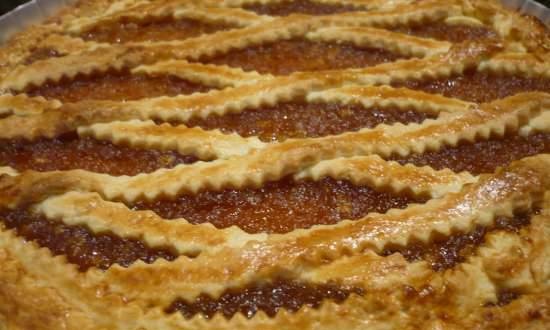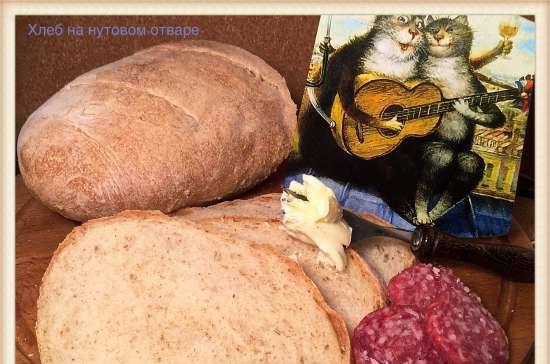Chapter 5. Changes in the chemical composition of tea leaves
The tea leaf is characterized by a rich set of chemical components, most of which are subjected to
biochemical, thermochemical and thermophysical changes... Tea production is based on three types of processes: enzymatic, thermal and mechanical. The role of each of them is different and depends on what type of tea you want to get.
The chemical composition of finished tea is significantly different from that of a green leaf.. The most valuable component of tea leaves is phenolic compounds... It is they, more than other substances, that undergo transformations with the formation of products that form the quality of the finished tea. IN mainly, changes occur in those substances that are formed during secondary oxidative conversions of catechins and other polyphenols.
Oxidizing enzymes of tea leaves, depending on the conditions and nature of production, can play both a positive and a negative role. So, in the production of green tea, oxidative enzymes play a negative role, therefore, at the very first stage of the technological process, they are destroyed. In the production of yellow, red and black tea, enzyme action is necessary, but to varying degrees. For example, in the production of red tea, where a weaker infusion and a specific taste and aroma are required, the action of oxidative enzymes is stopped much earlier than in the production of black.
Thus, in Depending on the degree of oxidation processes from the same raw materials, you can get products of a fundamentally different type with a specific composition, taste and biological effect: black, red, yellow, green and white teas.
Physiologically, the most valuable are white, green and yellow teas, since they contain a large amount of phenolic compounds and vitamin C. White tea is a particularly balanced product, but yellow tea still contains more extractives, which is associated with their accumulation during withering.In black and red tea, the content of extractives, phenolic compounds and L-ascorbic acid is reduced, which is the result of deeper oxidative processes. However, in terms of the aldehyde content, they surpass all other types of tea, which makes them more aromatic and tart. The amount of free acids in white, green and yellow teas decreases in comparison with the original raw materials, and increases in black and red teas. This indicates that white, yellow and green tea production does not experience an increase in acidity as is seen in red and black tea production.
Changes in the chemical composition of tea leaves in the production of green tea
Changes occur at all stages of the green tea production process and are mainly caused by exposure to high temperatures (thermochemical processes), as well as by the parameters of mechanical action.
High temperatures cause a strong decrease in tannin, extractive substances and the amount of free amino acids, the total amount of green pigments decreases, and yellow pigments increase, the amount of pectin substances increases slightly. When exposed to high temperatures, the caffeine content gradually decreases from the green leaf to the semi-finished product, and the volatile aldehyde content slightly increases, and a gradual decrease in the total amount of soluble sugars is noted.
In the processes of green leaf processing, the reduction of extractives causes a softening of the bitter taste of green tea and the formation of a characteristic infusion color. The olive color, characteristic of the finished green tea leaf, is obtained by heating chlorophyll in an acidic medium, resulting in a mixture of greenish substances - pheophytins a and p. When pheophytin a decomposes, phytochlorin is formed, which gives solutions of olive color, and when pheophytin decomposes (3, a substance is obtained called phytorodin, which gives the leaf a reddish tint. It is known that obtaining a red leaf color in the production of green tea is undesirable. This may be due to incomplete inactivation of the complex enzymes, as a result of which the oxidation of tannins occurs, and is also associated with a violation of the duration of heat treatment of green tea leaves with a high moisture content, which leads to a decrease in the aromatic and taste characteristics of the finished tea, an increase in its color.
The chemical composition of green tea is very close to green tea leaf.... Due to the absence of the fermentation process, which is the main technological process in the production of black tea, green tea in the bulk of the leaf retains catechins (up to 90% of the raw material), which are known to have P-vitamin properties, as well as other vitamins, especially ascorbic acid. Thus, even those insignificant changes in the chemical composition of the tea leaf during the production of green tea form certain qualitative characteristics of the finished tea - color, aroma, taste, which are crucial for determining its valuable properties.
In appearance (harvesting), ready-made green tea is smooth, uniformly twisted, different in size (depending on the type of leaf) tea leaves. It has a subtle, delicate, typical green tea, pleasant, tart taste. Its infusion is transparent, lemon-colored. The color of the boiled leaf is uniform, with an olive greenish tint.
Changes in the chemical composition of the tea leaf during the production of yellow tea
The technology of yellow tea provides for an insignificant development of enzymatic oxidative transformations of phenolic compounds in the process of wilting of a tea leaf, and then their termination by inactivation of enzymes in the process of fixing the raw material. This makes yellow tea different from green, since the rest of the technological processes for both types of tea are the same.
Oxidative processes in the production of yellow tea are required to ensure the formation of the required color of the infusion, the removal of excessive bitterness characteristic of the green leaf, softening the taste, and creating a specific aroma. Their development, in contrast to the production of black tea, does not lead to the formation of red and brown products, since the leaf tissue has not yet been destroyed. Therefore, the leaf retains its green color, and the infusion has a yellow-pink tint.
To obtain the desired properties in the production of yellow tea, along with enzymatic processes that are only partially used, heat treatment of raw materials is used, in which its quality is finally formed. Heat treatment, which includes steaming and drying at high temperature, plays an important role in softening the taste of yellow tea and creating aroma. This is due to the fact that at elevated temperatures, the interaction of phenolic compounds with amino acids and sugars intensifies, resulting in a softening of taste and the formation of aromatic products. Along with this, during heat treatment, isomerization and destruction of substances that negatively affect the quality of tea (chlorophyll, some polyphenols, alcohols and aldehydes) occur.
It is important to emphasize that the technological processes in the production of yellow tea are aimed at imparting the best properties of green and black tea to the tea leaf - these antipodes both in aroma, taste and color characteristics, and in biological properties. Yellow tea is a physiologically very valuable product, which leads to a high content of catechins, vitamins and extractives... In terms of softness, tenderness of taste, intensity of infusion and strength of aroma, yellow tea surpasses green tea, and in physiological properties - black tea.
Changes in the chemical composition of tea leaves in the production of red tea
In contrast to the production of black tea, special techniques are used to prepare red tea with a different combination of enzymatic and thermochemical processes.
The regulation of the action of oxidative enzymes, on the one hand, and the use of heat treatment, on the other, allow directing the course of oxidative processes and biochemical transformations of tea leaf components. In this case, biochemical processes are directed so as to enhance aroma formation, somewhat weaken the oxidation of phenolic compounds and slow down the development of fermentation. Due to the special combination of enzymatic and thermochemical processes in the production of red tea, there is no loss of phenolic compounds and essential oils in such a large amount as in the production of black tea. As a result, the content of catechins and essential oils in red tea is always higher than in black tea obtained from the same raw materials.
A characteristic and extremely important feature of red tea is its high extract and tannins.... The retention of soluble tannin and extractives results in a product with a full and tart taste and a stronger and more persistent aroma. It, as if combining the unique aroma of black tea with the aroma of green, is a highly tonic and refreshing drink.
Some authors call oolong semi-fermented tea. This, in fact, does not reflect the biochemical changes that occur during its production. Because, for example, if the fermentation is stopped prematurely in the middle of the process or earlier, non-fermented black tea is obtained, which has nothing to do with taste and aroma with red tea.
Changes in the chemical composition of tea leaves in the production of black tea
As a result of biochemical transformations occurring in tea raw materials, almost all components of the chemical composition of the leaf change quantitatively and qualitatively, taste, aroma and color of tea infusion are formed.
As a result of enzymatic oxidative transformations of phenolic compounds, water-soluble dark red and brown products of oxidation and condensation of catechins are formed, which give the color characteristic of black tea.The bitter taste of unoxidized catechins disappears and a pleasant, tart, full astringent taste of the tea infusion is formed, due to the presence of oxidized forms of the tannin-catechin complex.
Essential oils and aldehydes of green tea leaves change significantly; the smell of green fresh leaves disappears and the characteristic aroma of dry black tea is gradually formed. The formation of new compounds that determine the aroma, taste and color of black tea partially consumes such important components of the chemical composition of the leaf as phenolic compounds, amino acids, water-soluble carbohydrates, L-ascorbic acid, and chlorophyll. In the production of black tea, the content of the main substances in tea decreases (Table 6), and this tendency is especially pronounced when high temperatures are applied and mechanical action. Some of the soluble substances pass into an insoluble state, which leads to a decrease in the amount of extractive substances in the finished tea.
In appearance (harvesting), finished black tea is a mass of even, uniform in size, well-twisted tea leaves. It has a delicate, delicate aroma, pleasant taste with astringency. Its infusion is bright, transparent, of varying intensity; the cooked sheet is homogeneous, with a light brown tint.












